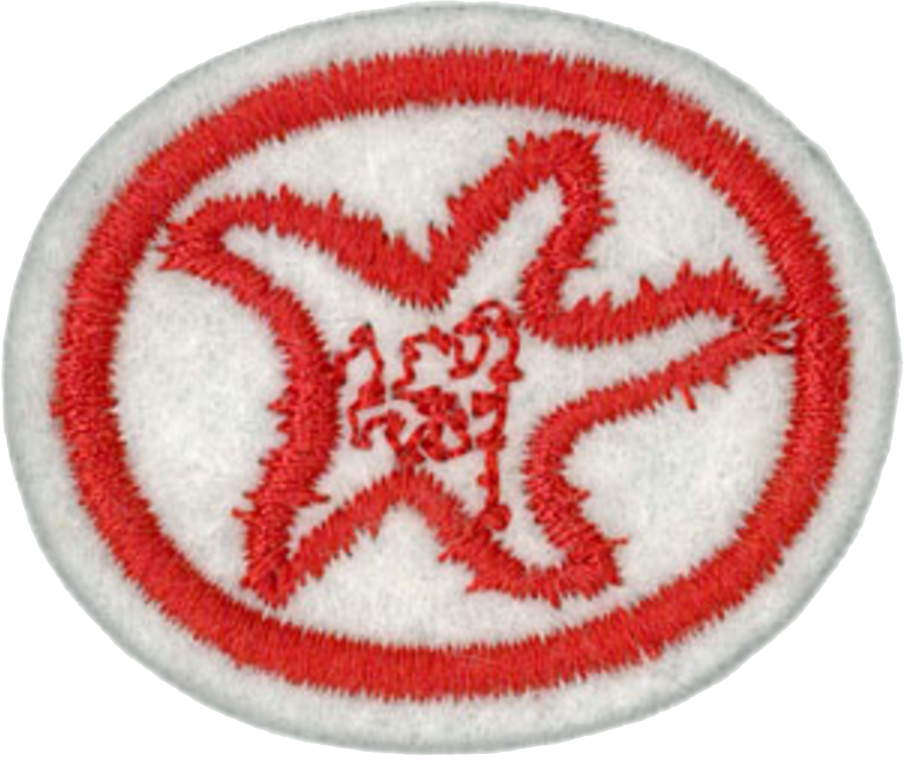Difference between revisions of "AY Honors/Marine Invertebrates/Requirements/es"
(Created page with "</noinclude>Briozoos (animal musgo) <noinclude>") |
(Created page with "</noinclude>Medusas <noinclude>") |
||
| Line 30: | Line 30: | ||
<noinclude></noinclude><section end=req1h /></b> | <noinclude></noinclude><section end=req1h /></b> | ||
| − | :<b>i. <section begin=req1i /><noinclude> | + | :<b>i. <section begin=req1i /><noinclude></noinclude>Percebe (cirrípedos) |
| − | </noinclude> | + | <noinclude></noinclude><section end=req1i /></b> |
| − | <noinclude | ||
| − | |||
| − | :<b>j. <section begin=req1j /><noinclude> | + | :<b>j. <section begin=req1j /><noinclude></noinclude>Estrella de mar |
| − | </noinclude> | + | <noinclude></noinclude><section end=req1j /></b> |
| − | <noinclude | ||
| − | |||
| − | :<b>k. <section begin=req1k /><noinclude> | + | :<b>k. <section begin=req1k /><noinclude></noinclude>Mejillón o almeja |
| − | </noinclude> | + | <noinclude></noinclude><section end=req1k /></b> |
| − | <noinclude | ||
| − | |||
| − | :<b>l. <section begin=req1l /><noinclude> | + | :<b>l. <section begin=req1l /><noinclude></noinclude>Medusas |
| − | </noinclude> | + | <noinclude></noinclude><section end=req1l /></b> |
| − | <noinclude | ||
| − | |||
| − | :<b>m. <section begin=req1m /><noinclude> | + | :<b>m. <section begin=req1m /><noinclude></noinclude>Lapa (arqueo gasterópodos) |
| − | </noinclude> | + | <noinclude></noinclude><section end=req1m /></b> |
| − | <noinclude | ||
| − | |||
| − | :<b>n. <section begin=req1n /><noinclude> | + | :<b>n. <section begin=req1n /><noinclude></noinclude>Gusano de tubo |
| − | </noinclude> | + | <noinclude></noinclude><section end=req1n /></b> |
| − | <noinclude | ||
| − | |||
| − | :<b>o. <section begin=req1o /><noinclude> | + | :<b>o. <section begin=req1o /><noinclude></noinclude>Ostras |
| − | </noinclude> | + | <noinclude></noinclude><section end=req1o /></b> |
| − | <noinclude | ||
| − | |||
| − | :<b>p. <section begin=req1p /><noinclude> | + | :<b>p. <section begin=req1p /><noinclude></noinclude>Anfípodos (talítridos) |
| − | </noinclude> | + | <noinclude></noinclude><section end=req1p /></b> |
| − | <noinclude | ||
| − | |||
| − | :<b>q. <section begin=req1q /><noinclude> | + | :<b>q. <section begin=req1q /><noinclude></noinclude>Esponjas (poríferos) |
| − | </noinclude> | + | <noinclude></noinclude><section end=req1q /></b> |
| − | <noinclude | ||
| − | |||
| − | :<b>r. <section begin=req1r /><noinclude> | + | :<b>r. <section begin=req1r /><noinclude></noinclude>Galleta de mar (sand dollar) |
| − | </noinclude> | + | <noinclude></noinclude><section end=req1r /></b> |
| − | <noinclude | ||
| − | |||
| − | :<b>s. <section begin=req1s /><noinclude> | + | :<b>s. <section begin=req1s /><noinclude></noinclude>Coral |
| − | </noinclude>Coral | + | <noinclude></noinclude><section end=req1s /></b> |
| − | <noinclude | ||
| − | |||
| − | :<b>t. <section begin=req1t /><noinclude> | + | :<b>t. <section begin=req1t /><noinclude></noinclude>Cangrejo fantasma (cangrejos de la arena) |
| − | </noinclude> | + | <noinclude></noinclude><section end=req1t /></b> |
| − | <noinclude | ||
| − | |||
<section begin=challenge /> | <section begin=challenge /> | ||
Revision as of 20:26, 16 April 2021
Nivel de destreza
2
Año
1956
Version
29.12.2025
Autoridad de aprobación
Asociación General
1. Ser capaz de identificar al menos un ejemplo de los siguientes 15 animales de la orilla de mar:
- a. Tunicado (urocordados)
- b. Anémona
- c. Quitones (poliplacóforos)
- d. Cangrejo ermitaño
- e. Ofiuroideos
- f. Erizo de mar
- g. Pepino de mar (holoturoideos)
- h. Briozoos (animal musgo)
- i. Percebe (cirrípedos)
- j. Estrella de mar
- k. Mejillón o almeja
- l. Medusas
- m. Lapa (arqueo gasterópodos)
- n. Gusano de tubo
- o. Ostras
- p. Anfípodos (talítridos)
- q. Esponjas (poríferos)
- r. Galleta de mar (sand dollar)
- s. Coral
- t. Cangrejo fantasma (cangrejos de la arena)
Make a collection or photographs of the following seashore animals:
- a. Three kinds of crabs
- b. One kind of sea star
- c. Any other five animals listed in requirement 1.
- Hard-bodied animals, such as crabs, sea star, and chitons, may be killed in a 5% solution of formaldehyde or a 70% solution of alcohol, and then dried by a fire. The sun will cause the color to fade. Soft-bodied animals must be kept in a 3% solution of formaldehyde or a 70% solution of alcohol. If commercial formalin is used in place of formaldehyde, the above percentage figures should be doubled.
Describe the following processes:
- a.
The swimming action of a sea jelly
- b.
The method of an anemone capturing food
- c.
The running of a crab
- d.
How does a sea star digest a clam or oyster when it has such a small mouth opening?
4.
Name four low-tide animals and two high-tide animals.
5.
Answer the following questions on relationships:
- a.
What relationship do crabs and barnacles have to insects?
- b.
What relationship does the sea squirt have to man?
- c.
Name a common land dweller that is related to the clamworm.
- d.
The octopus belongs to the phylum Mollusca. Which two animals listed in No. 1 are related to the octopus?
- e.
Sea star, sea cucumber, and sea urchin all belong to the phylum Echinodermata. Why do they belong together? (Clue: Find out what "Echinodermata" means.)
6.
Give an oral report on two of the following activities:
- a.
Visit a seashore at night and by means of a flashlight observe the activity of animals on shore and in the water. Notice the many plants and animals visible when the beam of light is directed into the water. These minute organisms are called plankton.
- b.
Tow a fine-mesh cloth or regular plankton net through the water and observe through a microscope the many tiny animals and plants that are collected.
- c.
Select three items under #1 that are important economically. Explain why they are important.


